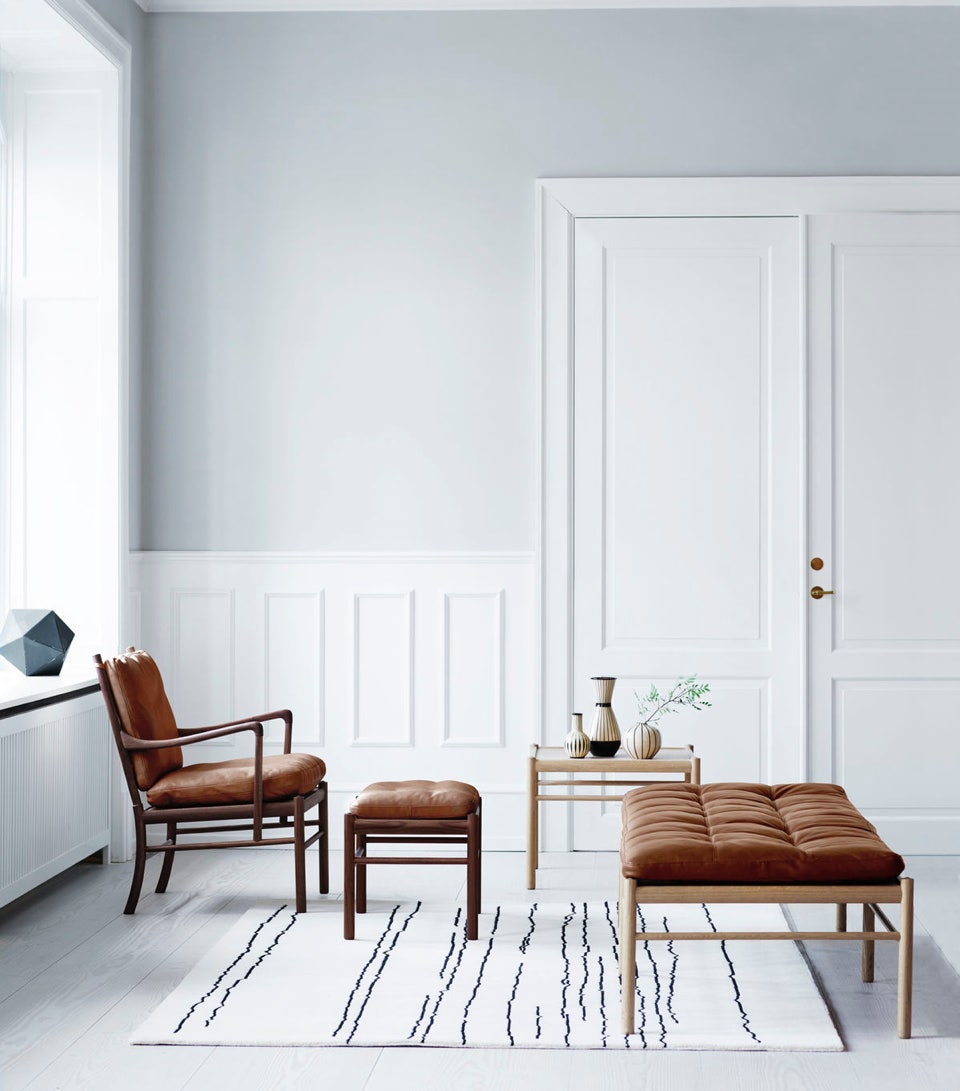-15% off with DESIGN15

The Colonial Armchair OW149 is a beautiful and well crafted chair with a simple and refined expression. The Colonial Chair OW149 is very stable and has an outstanding finish. The seat is made of hand woven cane. The OW149 Armchair and the OW149-F Ottoman are ideal for rooms where flexibility and lightness are desired. Upholstered in fabric or leather on request. Turnable in fabric.
Ole Wanscher (1903-1985) was a leading figure in the Scandinavian design movement. The qualities inherent in Ole Wanscher's furniture designs began to receive widespread international attention in the early 1990s. Today, all Ole Wanscher's pieces are desirable collector's items for enthusiasts around the world. His furniture exudes underplayed elegance and is it timeless, classic and thoroughly modern at one and the same time.

OW149 Chair
from
OW149-F Ottoman
from
Re-Wool 568 (price group 2)
Re-Wool 648 (price group 2)
Re-Wool 868 (price group 2)
Re-Wool 448 (price group 2)
Re-Wool 768 (price group 2)
Re-Wool 358 (price group 2)
White oiled oak + Sif 95
White oiled oak + Sif 98
Oiled walnut + Sif 98
Oiled walnut + Thor 306
Ole Wanscher

Ole Wanscher (1903-1985) was integral to the core aesthetic and functionality of modern Danish design. He studied under Kaare Klint at the Royal Danish Academy of Fine Arts and later worked at Klint’s design studio before becoming an independent furniture designer. He helped shape Danish furniture design as a designer and as an educator when he took over Klint’s professorship at the Academy.
Wanscher’s classic and contemporary designs made him popular. In 1958, the Danish newspaper Politiken wrote: “Owning a Wanscher chair is an adventure every day, and will
be so even several hundred years from now, for this is how long it lasts”. Today, his modern classics are still revered for their detail and his deep respect for materials.
While traveling through Egypt and Europe, Wanscher studied furniture design, finding inspiration in varied visual expressions that he incorporated into his own unique design aesthetic. He viewed furniture design as a branch of architecture and emphasized slim dimensions and resilient forms – a quest exemplified in many of his works, particularly the Colonial Chair and Colonial Sofa.
Wanscher created his best-known designs primarily between the late 1940s and early 1960s, in the post-war era when the “design for everyone” philosophy emerged. In Denmark, some of design’s biggest names created functional and affordable furniture for the Danish people and the small spaces they lived in. Wanscher took great interest in industrially produced yet high-quality furniture, designing several successful pieces.
Wanscher’s design earned him numerous accolades, including the Copenhagen Carpenters’ Guild Annual Award and the gold medal at the Milan Triennale in 1960 – honors that underscored Wanscher’s esteemed reputation both in Denmark and internationally.
Cheaper elsewhere? Contact us for a counter-offer!
Ce site web utilise les cookies techniques pour fonctionner.
Vous pouvez les refuser, mais perdrez alors la possibilité d'acheter.
OK
Refuser